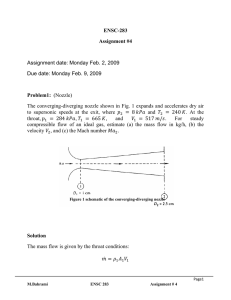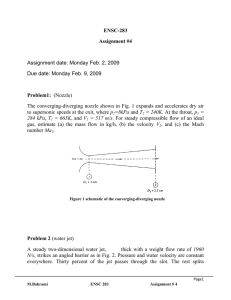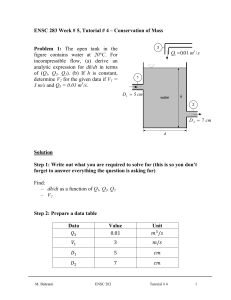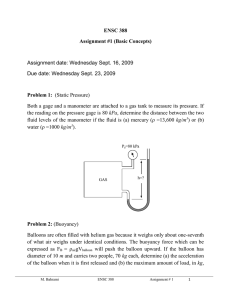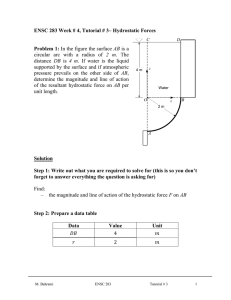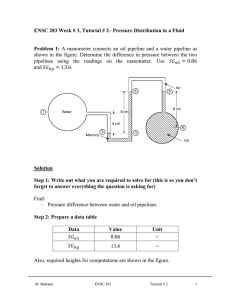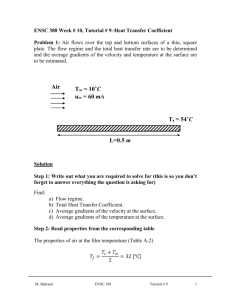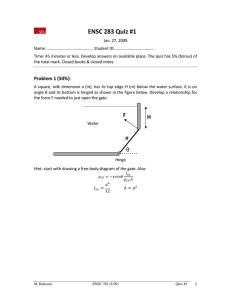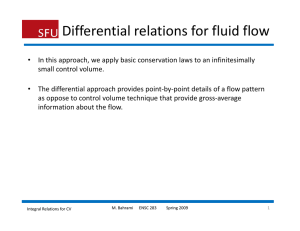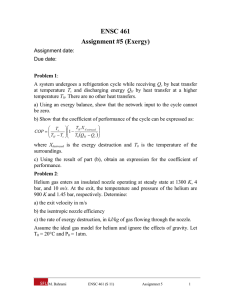ENSC-283 Assignment #5 Problem1:
advertisement
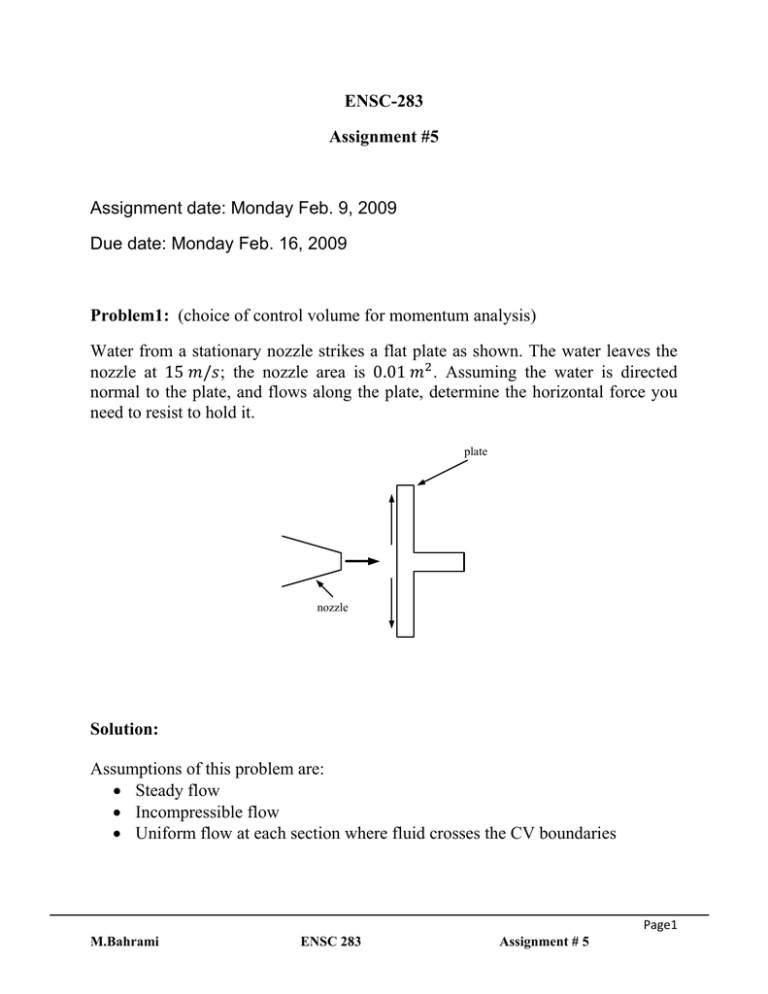
ENSC-283 Assignment #5 Assignment date: Monday Feb. 9, 2009 Due date: Monday Feb. 16, 2009 Problem1: (choice of control volume for momentum analysis) Water from a stationary nozzle strikes a flat plate as shown. The water leaves the nozzle at 15 / ; the nozzle area is 0.01 . Assuming the water is directed normal to the plate, and flows along the plate, determine the horizontal force you need to resist to hold it. plate nozzle Solution: Assumptions of this problem are: Steady flow Incompressible flow Uniform flow at each section where fluid crosses the CV boundaries Page1 M.Bahrami ENSC 283 Assignment # 5 V y x We chose a coordinate system in defining the problem above. We should choose a suitable control volume. Regardless of our choice of control volume, and our assumptions lead to . and . 0 where is body force. Two possible control volumes are shown by the dashed line below. CV1 CV2 Evaluating the momentum flux term will lead to the same result for both control volumes. Problem is solved for CV1 and here and we let you solve the problem for CV2. The control volume has been selected so that the left surface is equal to the area of the right surface. Denote this area by . Page2 M.Bahrami ENSC 283 Assignment # 5 The control volume cuts through your hand. We denote the components of the and and assume both to reaction force of your hand on the control volume as be positive. Atmospheric pressure acts on all surfaces of the control volume. Note that the pressure in a free jet is ambient. Patm Patm Ry Rx W Body force in the y direction is denoted as . Since we are looking for horizontal forces, we write the x component of the steady flow momentum equation , . , There are no body forces in the x direction, hence, , 0. To evaluate , , we must include all surface sources acting on the control volume: , Consequently, , On the other hand, . . Note that jet velocity is in x direction so, . 999 15 . Thus, 0.01 2.25 Note: As you see in this problem, since atmospheric pressure is acting on both sides of the control volume, it is canceled out. Page3 M.Bahrami ENSC 283 Assignment # 5 Problem 2 (use of gauge pressures) Water flows steadily through the 90° reducing elbow shown in the diagram. At the inlet to the elbow, the absolute pressure is 220 and the cross-sectional area is . At the outlet, the cross-sectional area is 0.0025 and the velocity is 0.01 16 / . The elbow discharges to the atmosphere. Determine the force required to hold the elbow in place. 1 y 2 x Solution: Let us choose a control volume as shown. 1 CV V1 y 2 x V2 Note that we have several surface forces: on area at point 1 and atmospheric everywhere else. The exit section 2, is a free jet and so pressure is pressure, from the ambient pressure. We can simplify this problem by subtracting entire surface. Then, final results will be in gage pressure. Force diagram of the elbow is shown as below Page4 M.Bahrami ENSC 283 Assignment # 5 Rx P1,g y W Ry x Our assumptions to solve this problem are: 1. Uniform flow at each section 2. Incompressible flow 3. Steady flow 4. Neglect the weight of elbow and water in the elbow Since there is no body force in x direction, , the control volume surface in the x direction are: , 0. All surface forces acting on , This force in static condition should be balanced by momentum change in that direction, hence . , or , Note that the x component of the velocity at point 1 is conservation should be used 16 0.0025 0.01 . To find , mass 4 Therefore 1.19 10 0.01 999 4 0.01 1.35 Page5 M.Bahrami ENSC 283 Assignment # 5 Writing the y momentum equation gives , . , The only body force acting in y direction is the elbow weight and water weight. 0. Similar to the Since we assumed that these weights are negligible , calculation of , Note that there is no pressure force in y direction. Substituting the values 999 16 0.0025 0.639 Page6 M.Bahrami ENSC 283 Assignment # 5
